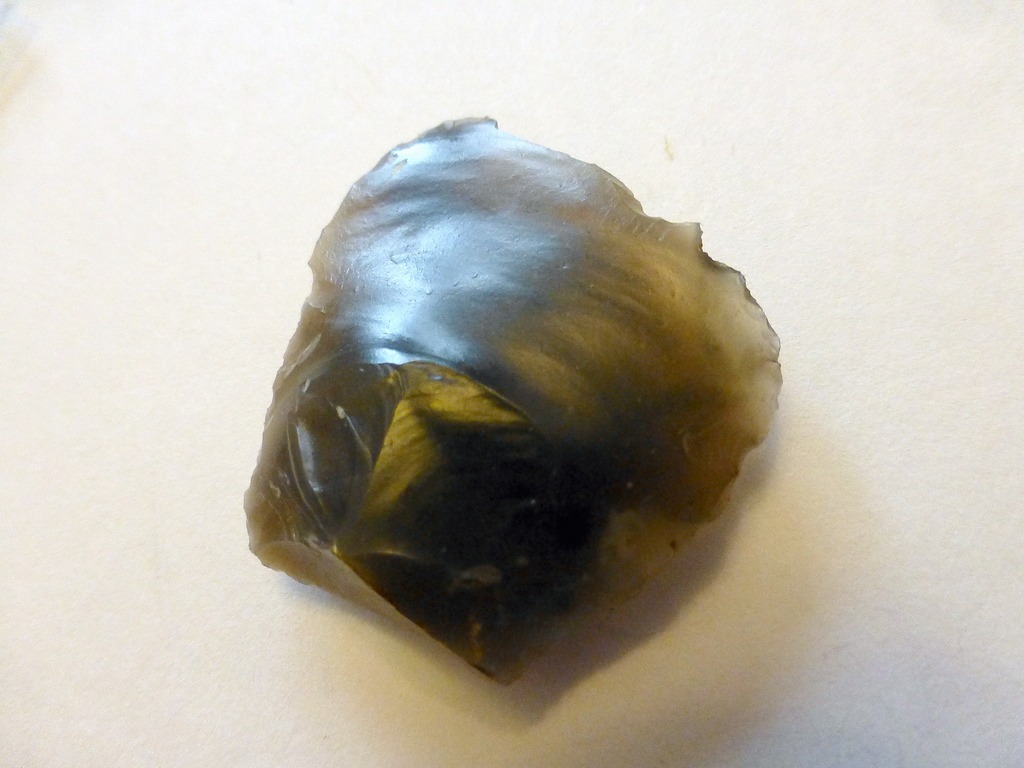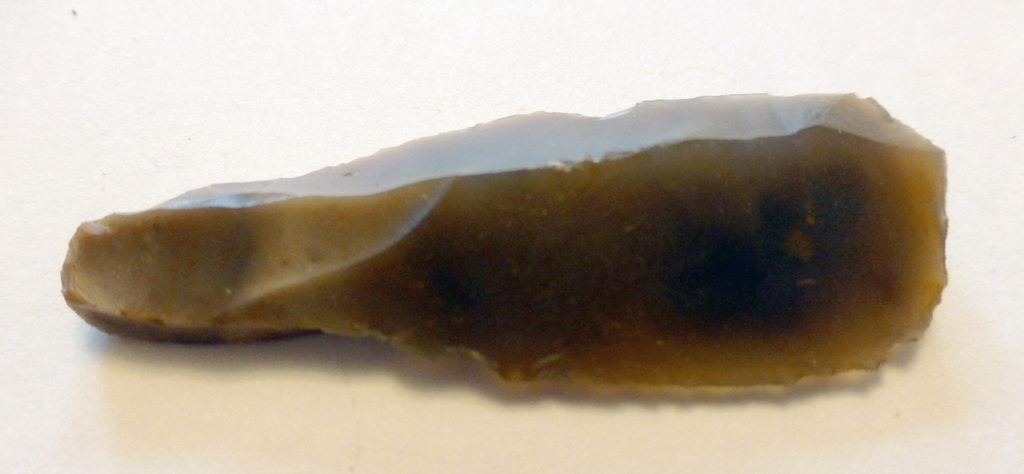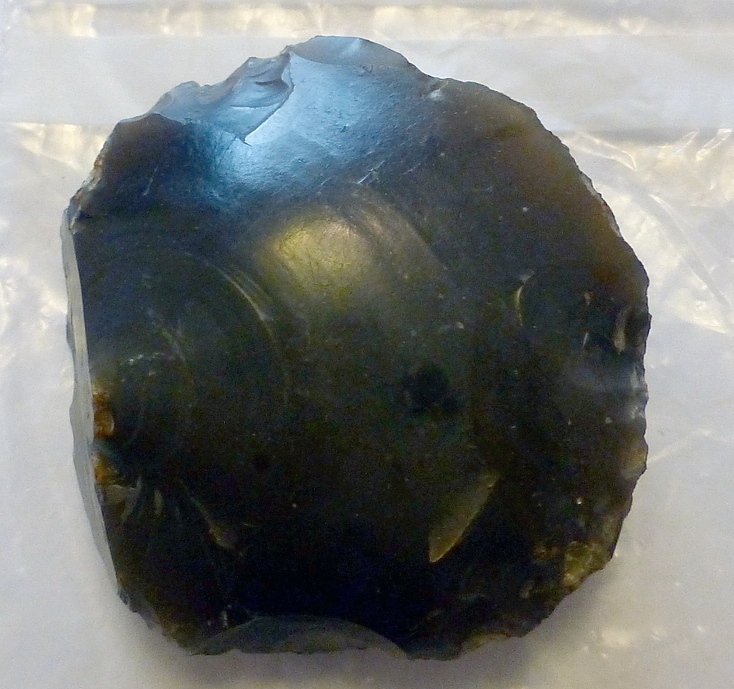Prehistoric to Neolithic Age at Martham
2.6 million to 2,600 years BC
The popular theory that Martham originates from the Saxon period is no doubt correct in terms of when it was substantially settled but evidence of earlier occupation exits from fieldwalking and archaeological finds.
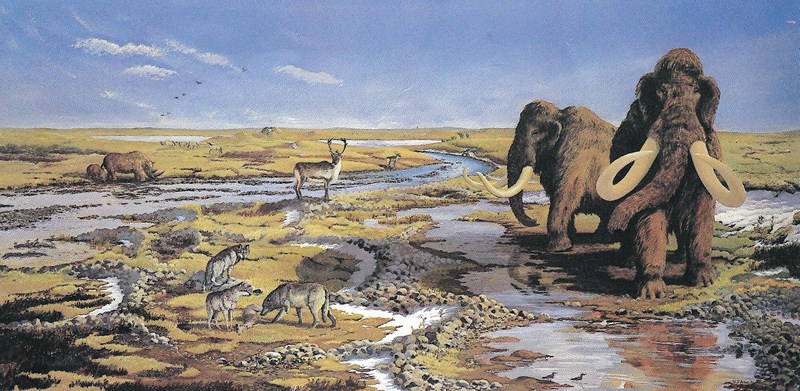
The traditional division of historic and prehistoric periods into “ages” is a device of convenience rather than something which reflects real chronological time. If one takes literally the transition from the Neolithic (“New Stone Age”) to the Iron Age, it is easy to imagine the people of the time throwing away their stone tools one day and embracing the new metal technology stages the next. Of course, things did not happen that way in reality, and the transition from one age to another was gradual. The process should be seen as changes in emphasis regarding trade, technology, social interactions and food production.
There had, for example, been a change of emphasis at the start of the Neolithic period (around 4,000 BC) when the old hunter/gatherer lifestyle was gradually replaced by more static farming as a way of life and this was particularly true of the changing landscape around the east of Norfolk. The changes were particularly affected by climate alterations. These would have led to a redefinition of the relationships which communities held with the land. The more settled existence would have probably led to an increased importance in land ownership and lines of ancestry associated with particular areas.
Palaeolithic Period. 2.6m to 10,000 BC
The Palaeolithic (or “Paleolithic”) age is a prehistoric period of human history distinguished by the development of the most primitive stone tools and covers roughly 95% of human technological prehistory. It extends from the earliest known use of stone tools 2.6 million years ago to the end of the Pleistocene period around 10,000 BC.
During this time the North Sea did not exist or was swampy land; Britain was joined to Europe which was one large land mass meaning animals and people occupied, roamed and hunted in areas well beyond what we now know as the East of England. It may well have looked like the illustration above.
The earliest archaeological evidence from the village is a Palaeolithic flint hand axe found at Martham railway station in 1969. The provenance of this object is uncertain as the yard contained dumps of stone that had been brought in from Frettenham. The Palaeolithic period is distinguished by the development of primitive stone tools.
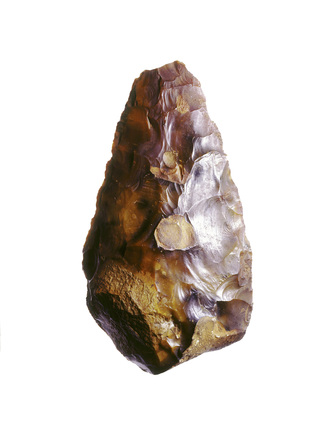
Mesolithic Period Around 10,000 to 4,000 BC
The term Mesolithic is used to describe the period in prehistory between the Palaeolithic (Old Stone Age) and Neolithic (New Stone Age). During this period people were using stone tools.
The stone tools used in the Mesolithic period include an important group of flint tools called microliths. These tiny blades are one of the most common types of flint tool found dating from this period. Usually no more than 2cm to 4cm long they are shaped along one edge into various sharp-edged forms. These tiny flints would be set into wooden shafts, held in place with resin from trees, and used as arrows or spears. Poison may have been added to the sharp flints to make them more effective and deadly. Jeremy Moore found the Neolithic arrow head shown here during renovation work at his farm at Moregrove. He also found Stone Age knives and scrapers but his favourite was a Mesolithic knife blade which has two different notched scrapers on the back edge making it a type of prehistoric multi-tool.
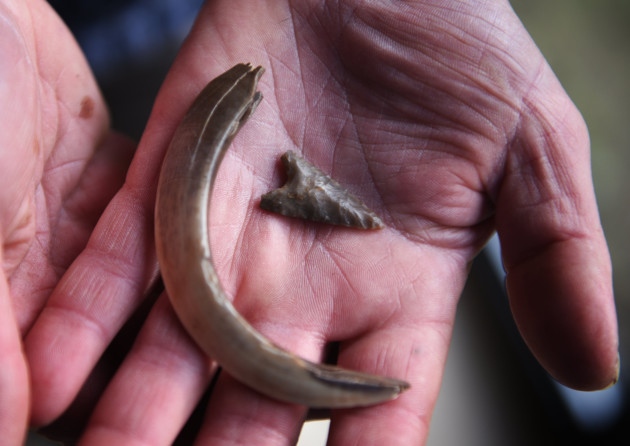
During the Mesolithic period most people lived in established base camps. From these temporary settlements small groups would forage and hunt in the local area. These base camps probably supported only a few family groups. Once the area was exhausted people moved to a new base camp. This may have happened seasonally. Known sites are often close to fresh water as this would be needed daily. Cooking pits have been identified at some of these sites. Here meat could be cooked by placing it on hot stones and covering it with turf. Smaller heated stones (potboilers) were placed inside containers to heat liquids. The excavation of Mesolithic sites sometimes reveals postholes, scooped hollows or pits, stone paving and hearths.
The people of Mesolithic Britain had to organise their lives around procuring food. They had a wide knowledge of the landscapes they lived in and knew where to find edible plants. They tracked herds of animals and knew the seasonal movements of birds, deer etc. They also used resources from the sea. Evidence suggests that people living in these settlements may have burnt off the scrubby vegetation of the Breckland district of Norfolk to encourage grazing animals that they could then hunt. In the early Mesolithic period different groups of hunter gathers lived in Britain. These groups could be identified by the types of tools they used. One had long elegant flint blades, another shouldered and tanged points and a third used more simple microliths and flint axes. Long blade groups were relatively common in East Anglia. Later in the Mesolithic period flint tools became more uniform and people all used similar types. This suggests that the groups living in Britain talked to one another and exchanged ideas. It is during the Mesolithic period that Britain became an island, probably around 6,500 BC.
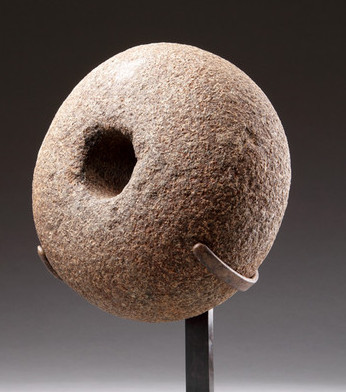
In the 1960’s an early Mesolithic to early Bronze Age quartzite macehead (the pommel from the top of a mace or staff) was ploughed up in the Mustard Hyrn area at the same time a polished Neolithic (4,000 BC to 2,600 BC) flint axe head was found near to what is now the strawberry farm at Cess.
It is clear from these finds that ancient man populated the general area of the Isle of Flegg long before Martham itself existed and the land looked very different from the way it does today but it is a salutary thought that man has trodden the soil here for thousands of years.
Neolithic Period 4,000 to 2,600
The Neolithic period has produced far more archaeological finds than the previous prehistoric periods due to the impact that Neolithic people had on the landscape. It was during this period that people began to farm the land rather than being hunter gatherers. Neolithic Norfolk, like the rest of Britain, was cut off from mainland Europe by the North Sea. North East Norfolk in particular has revealed important information concerning this period and significant evidence exists from the areas of Happisburgh and West Runton. Until 2016 no evidence from this period had been found on the Isle of Flegg but then Jean Chaplin of Somerton picked up a few Neolithic flint items whilst fieldwalking in the Martham area. I am grateful that she has allowed me to show them here.
